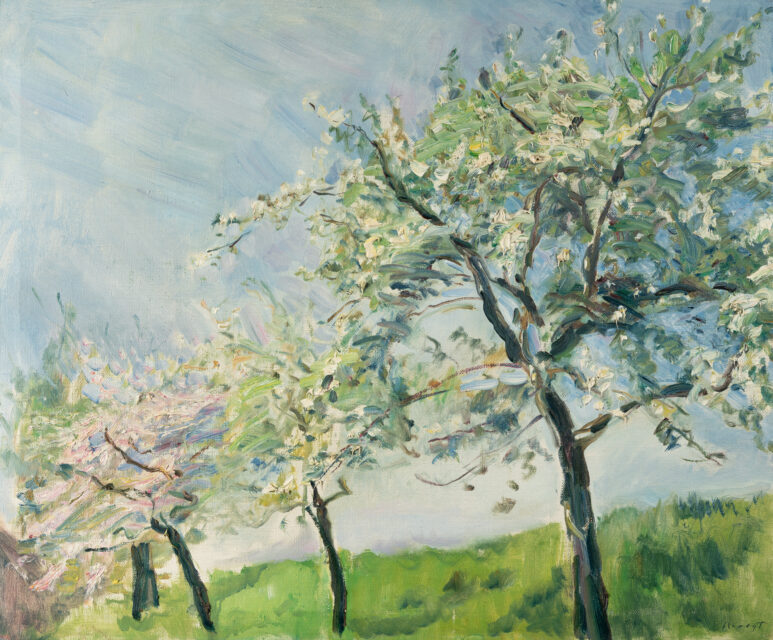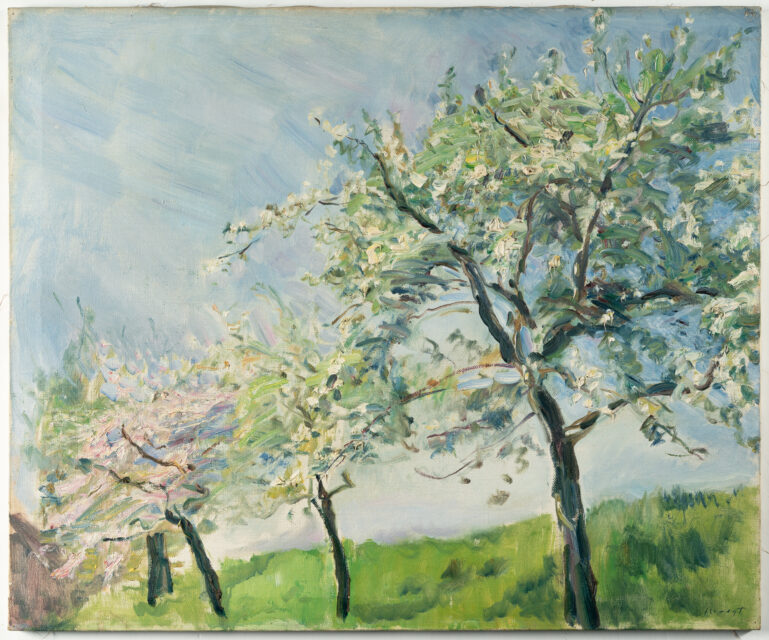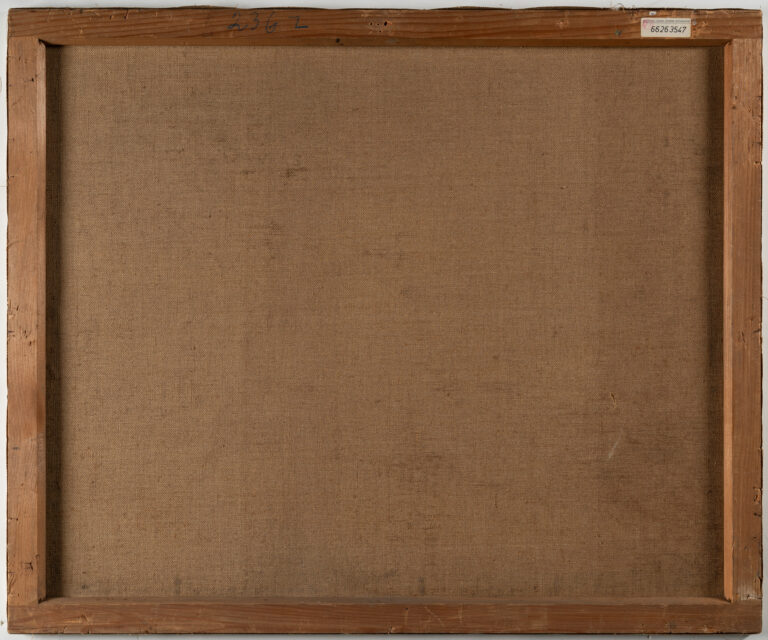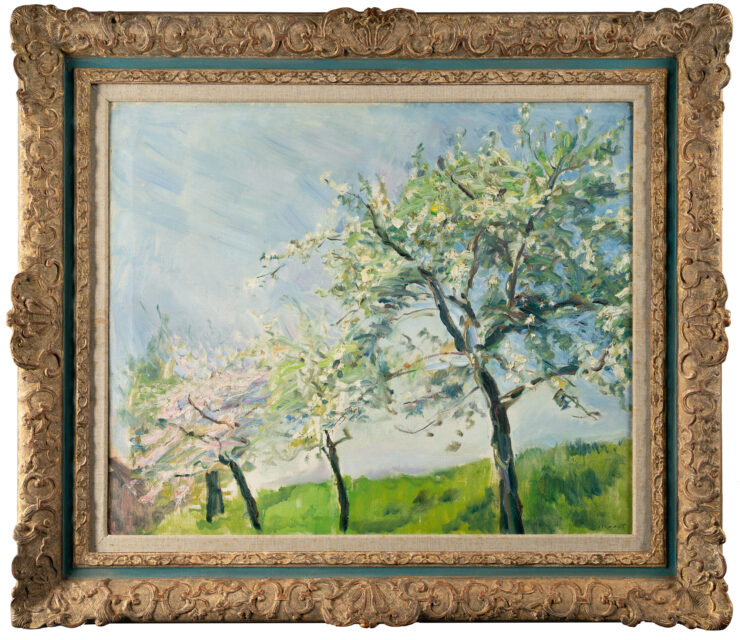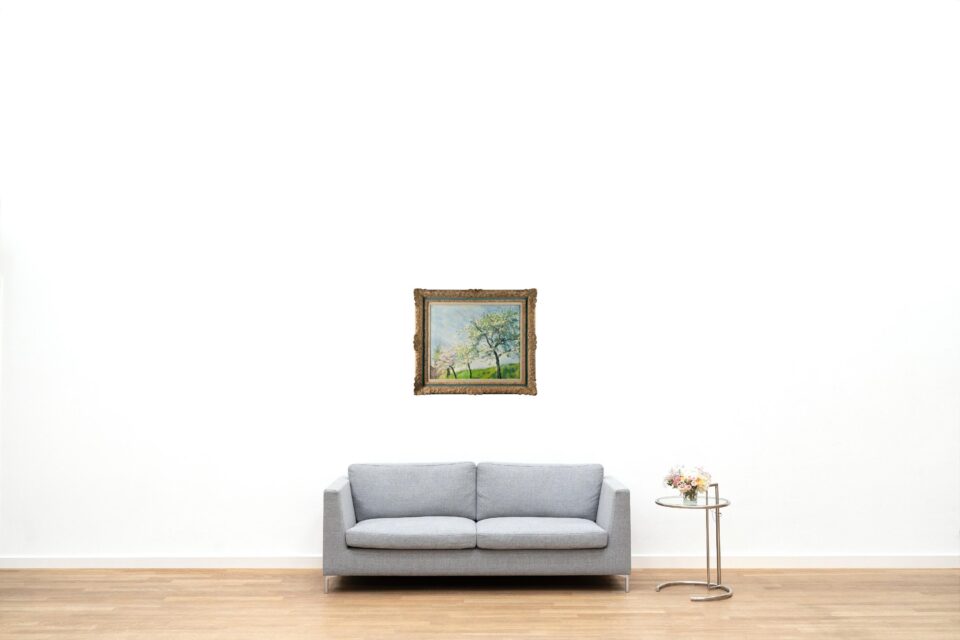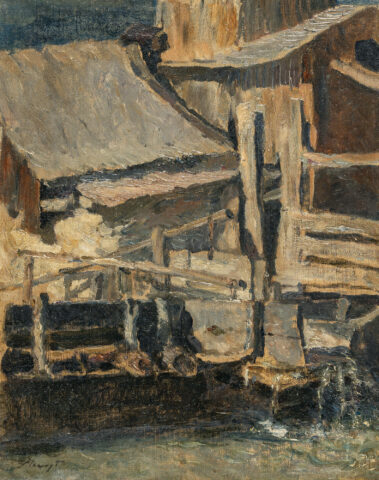
Blossoming cherry trees near Neukastel
Details
On the reverse of the frame with various handwritten inv. no. and an inv. no. label.
We would like to thank Bernhard Geil for his kind assistance in cataloguing this work.
Literature:
Kehrer, Hugo, Max Glaeser Eselsfürth Collection, Munich 1922, no. 17, with b/w illus. p. 49;
Bulletin of the Palatinate Industrial Museum I, 1926, p. 43;
Imiela, Hans-Jürgen, Max Slevogt. Eine Monographie, Karlsruhe 1968, p. 420, no illustration;
Roland, Berthold, Max Slevogt. Pfälzische Landschaften, Munich 1991, p. 138, with b/w illus.
Exhibition:
Max Slevogt, Pfälzisches Gewerbemuseum, Kaiserslautern 1925, cat. no. 7, no illustration.
Provenance:
Collection Max Glaeser (1871-1931), Eselsfürth near Kaiserslautern, acquired before 1922, first by inheritance to his wife Anna Glaeser, née Opp (1864-1944), then in 1944 to the grandchildren;
Kunsthandel Franz Resch, Gauting 14 February 1957;
Collection Georg Schäfer (1896-1975), Schweinfurt, on the reverse with the label and inv. no. 66263547;
Private collection, Southern Germany.
Description
– Wonderfully delicate impressionistic spring motif at Slevogt’s Neukastel country house
– Alongside Liebermann and Corinth, Slevogt is one of the most important German Impressionists
– From the important Max Glaeser collection near Kaiserslautern
“A weightless, almost pastel, blossoming spring day in the Palatinate.” Berthold Roland
Max Slevogt is one of the most important German Impressionists, as his marvellous painting “Blossoming Cherry Trees near Neukastel” proves. He depicts the characteristic trees from slightly below and with a dynamic diagonal arrangement, allowing the high, slightly cloudy spring sky to shine through delicately. The delicate white and pink-coloured blossoms are applied in the best impressionist manner, as if dabbed on.
Slevogt had been visiting the Palatinate regularly since his youth. During his time at the academy in the 1880s, he maintained close contact with the family of tobacco and cigarette manufacturer Dr Peter Finkler, whose daughter Antonie Finkler he married in 1898. In addition to the villa in Godramstein near Landau, the wealthy family also owned the wine-growing Neukastel estate, a summer house near Leinsweile. These two places in the Palatinate became Slevogt’s second home and in 1914 he acquired the estate, which is now known as the Slevogthof. The charming natural surroundings greatly inspired the painter, so that he created his first Palatinate landscapes early on. He was particularly productive in the years 1909 to 1913, for which his “Production and Sales Book” lists an incredible 60 Palatinate landscapes. Slevogt’s sensitive and atmospheric depictions bear witness to a happy creative period and are undoubtedly among the artistic highlights of his oeuvre. During and after the First World War, the Palatinate continued to be an important place of peace and relaxation for Slevogt. “It was spring again, despite the difficult times. Slevogt worked at Neukastel at the time, as if to distract himself (…). He must have particularly enjoyed spring after experiencing winter.” (Berthold Roland, Max Slevogt. Pfälzische Landschaften, Munich 1991, p. 138).
The painting comes from the estate of the Palatinate enamelware manufacturer Max Glaeser (1871-1931) from Eselsfürth near Kaiserslautern. He began to build up his art collection in 1907 with works from the Munich school of painting, buying paintings by the German Impressionists Slevogt, Liebermann and Corinth in the mid-1920s and adding works by Munch, Hofer and Expressionist works by Pechstein and Kirchner from 1928 onwards. Glaeser had the architect Hans Herkommer (1887-1956) build a unique Bauhaus-style villa for the outstanding collection, which also served as an exhibition building. After Glaeser’s death in 1931, his wife Anna preserved the art collection, which was then passed on to their three grandchildren and liquidated via the art trade. In 1957, the “Blossoming Cherry Trees near Neukastel” became part of the well-known Georg Schäfer Collection in Schweinfurt.
* All results incl. buyer’s premium (27%) without VAT. No guarantee, subject to error.
** All post-auction prices excl. buyer's premium and VAT. No guarantee, subject to error.
*** Conditional Sale: The bid was accepted below the limit. Acquisition of the work may still be possible in our post-auction sale.
R = regular taxation
N = differential taxation on works of art which originate from a country outside of the EU
The private or commercial use of images shown on this Website, in particular through duplication or dissemination, is not permitted. All rights reserved.


